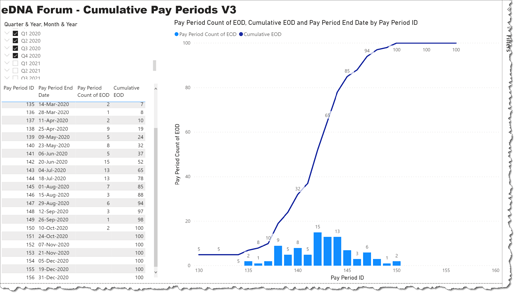Hi @talk2gwhite.
The benefits of the forum … I was just about to post almost exactly the same thing, albeit without the extra code to generate your Monday-after-pay-period-end-date Report Date … @Melissa beat me to it ![]()
Just for completeness, here’s what I wrote:
A small modification should get you close to where you’re going. You can use the Cumulative Total DAX pattern
to create the measure of interest, something like:
Cumulative EOD =
CALCULATE( [Pay Period Count of EOD],
FILTER( ALL( Dates ),
Dates[Date] <= MAX( Dates[Date] ) ) )
Then you can change the line chart to a combo chart, add the new cumulative measure to the line series, and turn on data values.
Hope this helps.
Greg
eDNA Forum - Cumulative Pay Periods V3.pbix (201.7 KB)
